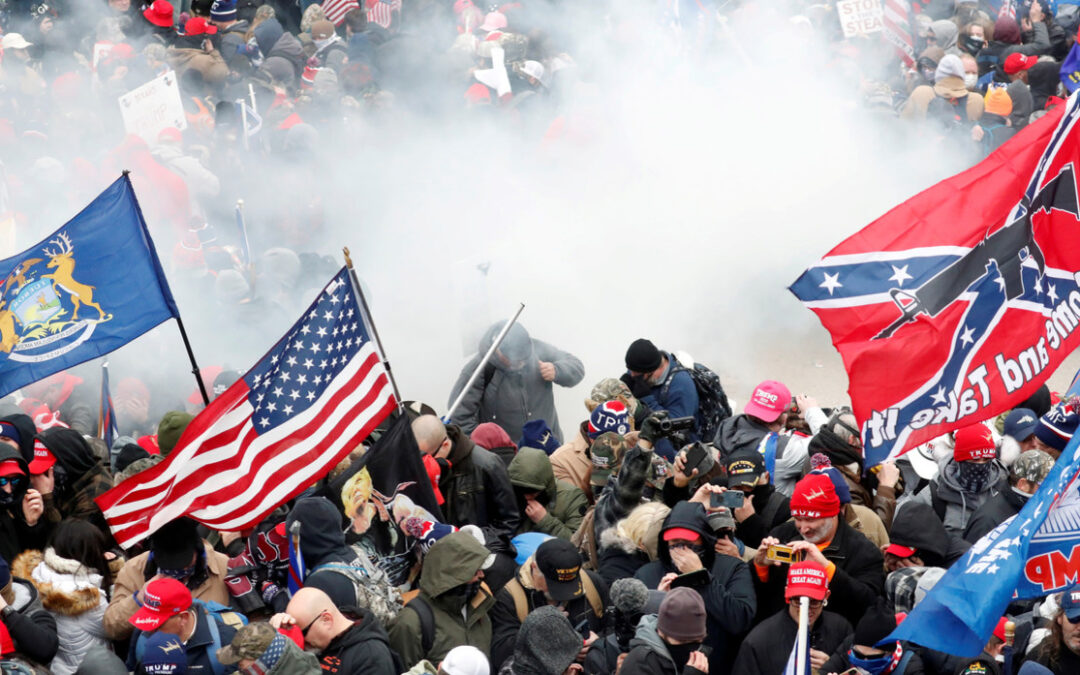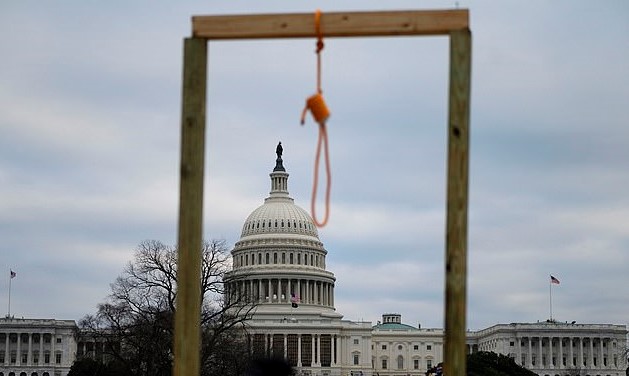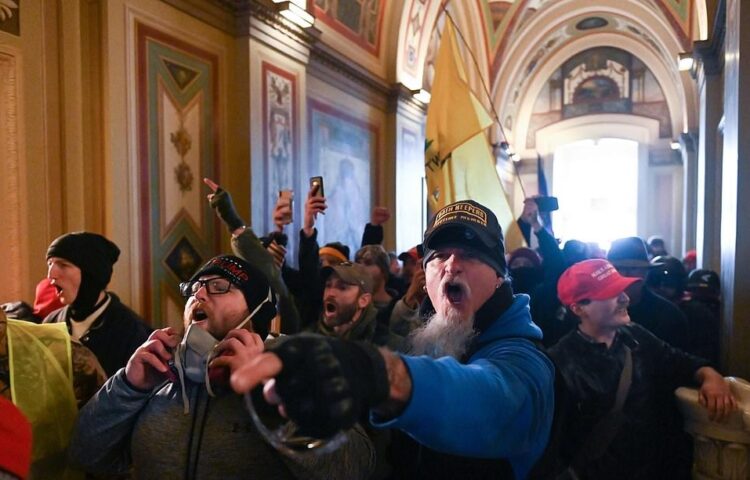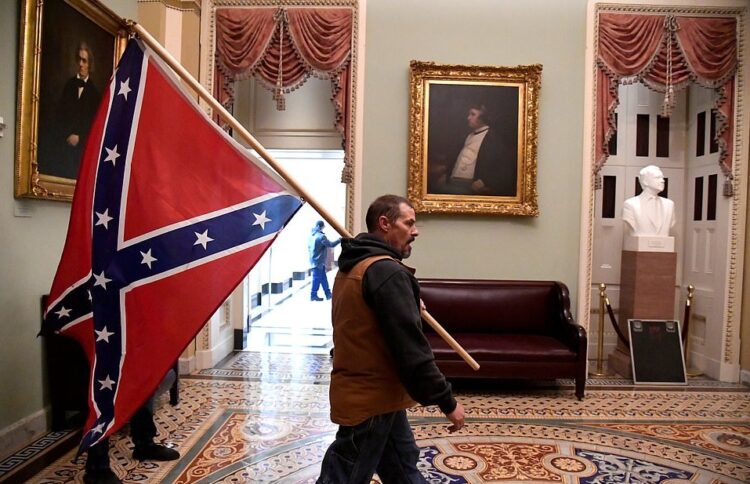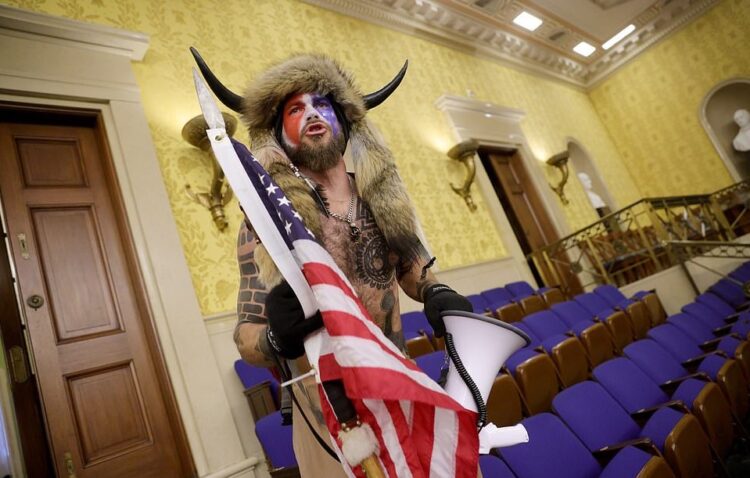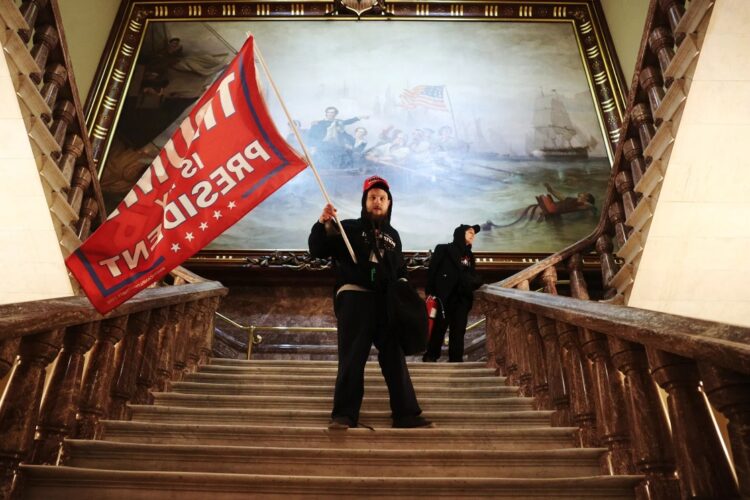Former President Donald Trump’s onslaught of falsehoods about the November election misled millions of Americans, undermined faith in the electoral system, sparked a deadly riot — and has now left taxpayers with a large, and growing, bill.
The total so far: $519 million.
WAPO: The costs have mounted daily as government agencies at all levels have been forced to devote public funds to respond to actions taken by Trump and his supporters, according to a Washington Post review of local, state and federal spending records, as well as interviews with government officials.
The expenditures include legal fees prompted by dozens of fruitless lawsuits, enhanced security in response to death threats against poll workers, and costly repairs needed after the Jan. 6 insurrection at the Capitol.
That attack triggered the expensive massing of thousands of National Guard troops on the streets of Washington amid fears of additional extremist violence.
Although more than $480 million of the total is attributable to the military’s estimated expenses for the troop deployment through mid-March, the financial impact of the president’s refusal to concede the election is probably much higher than what has been documented thus far, and the true costs may never be known.
Many officials contacted by The Post said they were still trying to tally the cost of rapidly scaling up security to deal with the increased threat of violence from Trump supporters.
Others have given up on trying to calculate their costs — perplexed over how to calculate the financial impact of a president’s injecting so much instability into the democratic system — opting instead to simply absorb them as the cost of doing business in the Trump era.
Some officials have shifted their attention to making plans for additional security measures going forward in the threatening environment fostered by Trump’s conspiratorial brand of politics.
“I think anytime you see an event like we saw on January 6th, it changes your perspective going forward. You don’t take things for granted like we used to,” said Michael Rapich, superintendent of the Utah Highway Patrol, which spent $227,000 on Jan. 17 to deploy 300 troopers to the state’s Capitol after threats of an armed siege by Trump supporters ahead of the inauguration of President Biden. “It is an incredible amount of money to spend.”
Other states spent even more, and officials are beginning to draft new security budgets that suggest ongoing security costs will grow significantly in the future as a result of the Capitol breach.
The bill to the federal government continues to grow daily, as thousands of National Guard troops patrol Washington and lawmakers consider a supplemental spending proposal to bolster their security.
The 25,000 troops that were deployed to Washington traveled on military planes and stayed in local hotels — their presence aimed at restoring order in the nation’s capital after an attempted insurrection that overwhelmed Capitol police and ended in five deaths.
The cost estimate of the troops, first reported by Bloomberg News, covers the troop presence at the Capitol through mid-March, according to Defense Department officials who spoke on the condition of anonymity to discuss internal figures.
With an unprecedented show of force that included checkpoints and militarized zones in Washington, the troops succeeded in thwarting efforts to disrupt Biden’s swearing-in, which took place on the same platform stormed by Trump-supporting rioters two weeks earlier.
It is not clear whether the House Democrats managing Trump’s impeachment trial plan to bring up the financial costs borne by taxpayers as a result of what critics have called his “big lie.”
The trial begins Tuesday, and Democrats have focused heavily on Trump’s speech to supporters shortly before the Capitol riot.
Trump’s defense lawyers have argued that he was within his rights to publicly question the election’s integrity and should not be held responsible for the actions of people who attacked the Capitol after his speech.
Several states are working to calculate the taxpayer costs for additional security and related expenses in the aftermath of the November election and the Jan. 6 protests.
In California, state officials estimated they spent about $19 million, deploying 1,000 National Guard troops and hundreds of state troopers from Jan. 14 to Jan. 21 to protect the state Capitol and other locations.
“That’s a lot of money, even by California standards, for one week’s worth of work,” California Department of Finance spokesman H.D. Palmer said in an interview. “But it was necessary work to make sure that we didn’t see the damage that could have occurred, had we had a crowd that was bent on doing damage to the building.”
In Ohio, taxpayers spent $1.2 million to deploy National Guard troops to the closed Statehouse building in Columbus.
The New Mexico legislature increased its appropriation for Capitol security during the 60-day session by almost 40 percent this month, handing taxpayers a bill of $1.5 million for personnel, equipment and other expenses, officials said.
Taxpayers paid to deploy helicopters to monitor potential demonstrations in Texas and North Carolina, temporary fencing around the capitols in Lansing, Mich., and Olympia, Wash., and extra security details for state lawmakers attending legislative sessions.
D.C. police dispatched 850 officers to help defend the Capitol, spending more than $8.8 million during the week of Jan. 6, acting police chief Robert J. Contee III said in his opening statement before a closed session of the House Appropriations Committee on Jan. 26.
Contee said the final tab will probably be much higher, and police and prosecutors will be “engaged for years” investigating and trying the rioters.
“The costs for this insurrection — both human and monetary — will be steep,” he said. “The immediate fiscal impact is still being calculated.”
